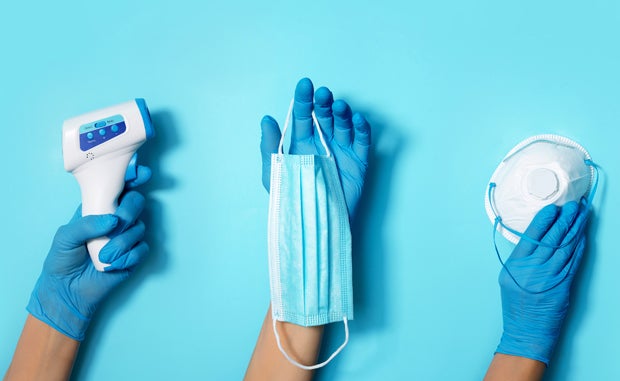

4 Crisis Management Steps to Reduce Supply Disruption

COVID-19 underscored the global health care supply chain’s fragile nature and the need to develop a more resilient infrastructure to avoid critical shortages of personal protective equipment (PPE), sanitizers, ventilators, drugs and other products.
Yet, success stories abound of how hospitals and health systems worked tirelessly to reach beyond traditional supply networks and group purchasing organizations to connect with thousands of manufacturers, community groups and nontraditional suppliers — including many that previously hadn’t served health care — to procure essential products.
The lessons learned from this sudden shift in supply chain models can be used to help health care providers perform better when the next inevitable crisis occurs, notes Douglas Hannah, assistant professor of strategy and innovation at Boston University.
After studying how supply chains broke down during the pandemic’s early days and talking with affected health care executives, physicians, engineers and others, Hannah recently outlined in Harvard Business Review steps health care organizations can take to create a more resilient supply infrastructure.
4 Steps to a Stronger Supply Infrastructure
 Coordinate the Response to Offers for Help
Coordinate the Response to Offers for Help
Many hospitals and health systems were flooded with calls, emails and other inquiries about PPE needs as the pandemic unfolded. Some messages reached the supply team, others didn’t. This underscores the need for purchasing or another department to be the single point of contact for coordinating with alternative suppliers and donors.
 Vet Equipment Designs to Ensure Quality
Vet Equipment Designs to Ensure Quality
Food and Drug Administration approval processes that certify the designs and production processes of products and emergency use authorizations allowed nontraditional suppliers to produce low-risk PPE. Quality control became an issue as some products from these sources proved to be ineffective, uncomfortable or unsafe. Digital platforms for aggregating, documenting and vetting medical supply designs can help. Open Source Medical Supplies, a collaborative between manufacturers and physicians, was launched last March to aid in this effort. The group has created a library of nearly 200 open-source designs for PPE and medical devices. These designs are vetted by medical advisers, and a volunteer community offers input on improving designs for safety.
 Identify And Vet Alternative Suppliers Before They’re Needed
Identify And Vet Alternative Suppliers Before They’re Needed
Identifying and forging relationships now with alternative suppliers, and adding these sources to approved vendor lists will allow provider organizations to move quickly during emergencies. To jump-start this effort, the AHA’s Association for Health Care Resource & Materials Management website provides a wealth of tools, including a list of more than 400 vetted and approved nontraditional suppliers offering PPE and other supplies and services.
 Test Supply Chain Availability
Test Supply Chain Availability
As part of emergency preparedness drills, include the potential for large-scale supplier disruption and determine which existing and alternative suppliers the organization can turn to when product shortages begin to surface.



